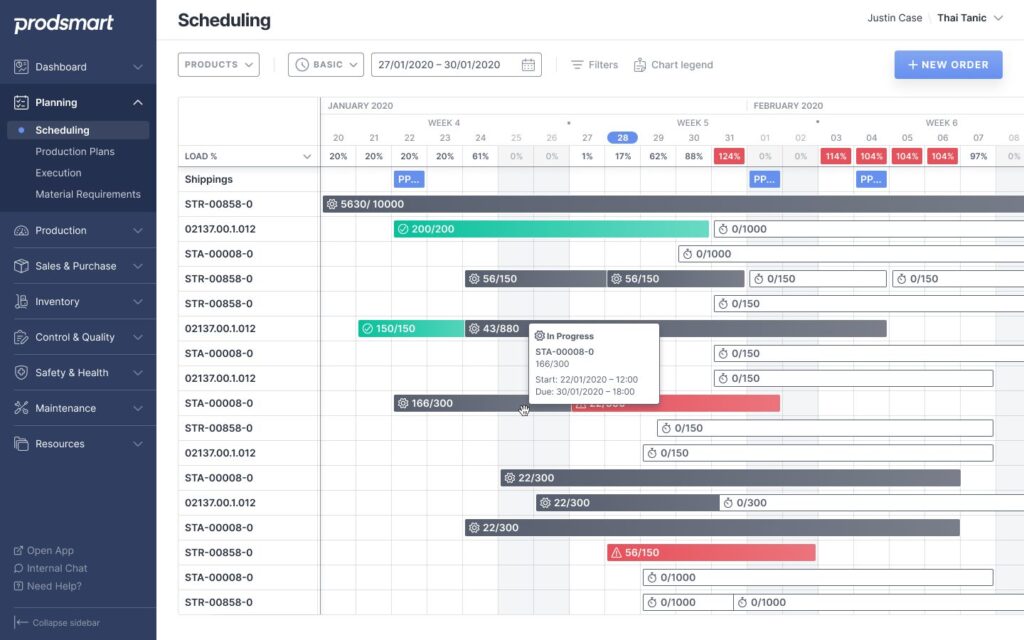& Construction

Integrated BIM tools, including Revit, AutoCAD, and Civil 3D
& Manufacturing

Professional CAD/CAM tools built on Inventor and AutoCAD
4 min read
Check out five considerations to make when you’re considering whether to buy or build your company’s future production management software.

Finding a solution to manage and track production is a top priority for any business that oversees a manufacturing process. And “should we buy or build our manufacturing production management software?” is probably one of the most common dilemmas manufacturing managers face.
There is no simple answer since buying and building a solution are two dramatically different realities. However, a great starting point is to assess your company’s immediate and long-term needs and goals. Ask yourself not only if you can build a custom solution but also if you should build one.
Is your company currently facing this predicament? We’ve put together five common considerations to help you answer the questions above ahead of searching for production management software:
“When do I need manufacturing software?” The answer to this question alone might solve your dilemma — there’s nothing that keeps you honest quite like a timeline.
If you decide to go with a third-party manufacturing software to track and trace your production, it can probably be set up in minutes and integrated with your apps and resources in days. Your software partner will be responsible to ensure the solution is ready when you need it, with a reduced chance of delays.
An in-house solution will require your team to dedicate several months to development. In-house projects are also known for exceeding the planned timeline (and the budget, but let’s talk about that later).
If your timeline hasn’t helped you decide, the second question you should ask yourself is: “How much can I spend on manufacturing software?”
If you decide to go with an in-house solution, you must know that pricing is rarely predictable. Large IT projects are known for running over budget 45% of the time, while some of them end up not delivering the features initially required.
You must also consider your opportunity costs: If your existing resources are fully dedicated to building and maintaining a new manufacturing software, what will they need to stop doing? And if they must pause vital tasks for your company, who and how much will you have to pay to handle them in the meantime?
The end result with a third-party solution is almost always a lower upfront investment and recurring cost, contrary to popular belief that building software in-house will pay for itself. Some companies have fixed values, while others have a variable cost based on the number of managers/users you need and the features you’ll use. Either way, you know exactly what you will pay. Your subscription also covers regular maintenance.
Do you have enough resources and expertise on your team to build software comparable to solutions currently available in the market? If you trust a software provider, you get technology and expertise from a company whose core activity is delivering solutions to companies like yours. A dedicated support or customer success team will help you implement the solution. These experts know how the software works and understand your needs based on experience.
An in-house solution, even with a team that has the knowledge to make it happen, will probably be a one-time event that falls out of your core expertise and competencies. Hiring someone specifically to manage the solution is always an option but a costly one. Even if an in-house solution does the job right, it doesn’t come with a team committed to your ongoing success.
Do you know an existing solution that is able to meet your needs? After comparing and evaluating the manufacturing software providers that might fit your organization, consider the flexibility of each solution and how it could adapt to your business. If it still misses some features on your nice-to-have list, is the company flexible enough to add them to your subscription? Is there another tool that has them? Are they really that important in the first place?
Off-the-shelf software sometimes can’t accomplish everything just the way you want it. One of the biggest benefits of an in-house solution is added freedom and flexibility to create a solution based solely on your company’s unique goals. However, please keep in mind that studies show that many IT projects end up falling short of their initial ambition, sacrificing features over usability or the completion of the project.
Risk management is also crucial to consider in your decision-making process. In-house software has the risk of becoming part of a high percentage of IT projects that deliver late or not at all. If you’re counting on manufacturing production management software to track your production or help with quality management, this risk is likely higher.
If you decide to buy software, the risk is usually lower. The main risk you would face is that you don’t have access to the code for problem-solving. However, if something goes wrong, you’ll have a committed team to help you fix eventual bugs. Simply call for support or create a ticket notifying the team about the bug, and they’ll solve the issue.
We hope this article guides you on whether or not to buy or build your future production management software. At Fusion Operations, we chose to have close interaction with our clients and provide enough information for them to make an informed decision. After a demo, you can try our solution for free before committing. Sign up today to start your trial:

By clicking subscribe, I agree to receive the Fusion newsletter and acknowledge the Autodesk Privacy Statement.
Success!
May we collect and use your data?
Learn more about the Third Party Services we use and our Privacy Statement.May we collect and use your data to tailor your experience?
Explore the benefits of a customized experience by managing your privacy settings for this site or visit our Privacy Statement to learn more about your options.